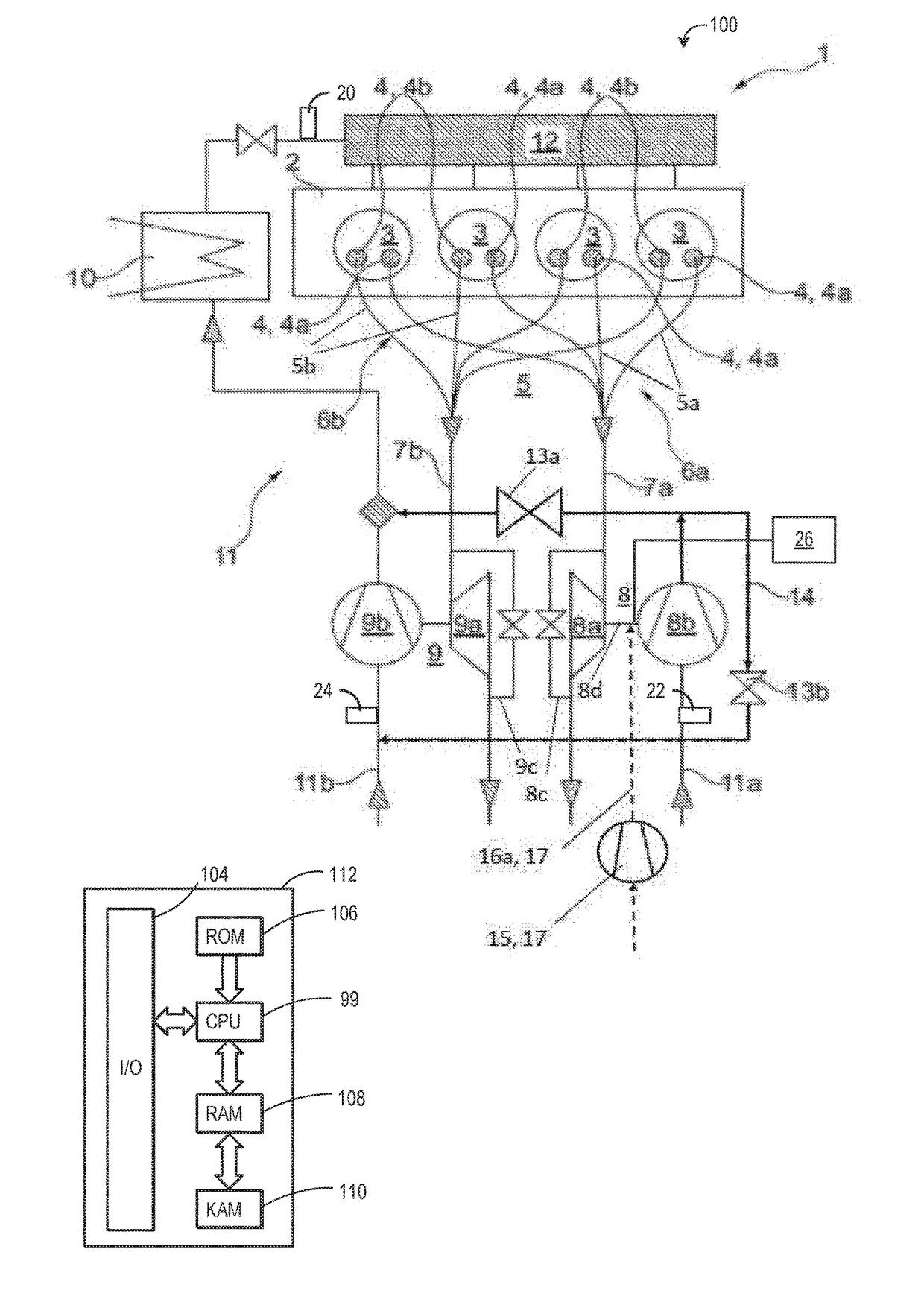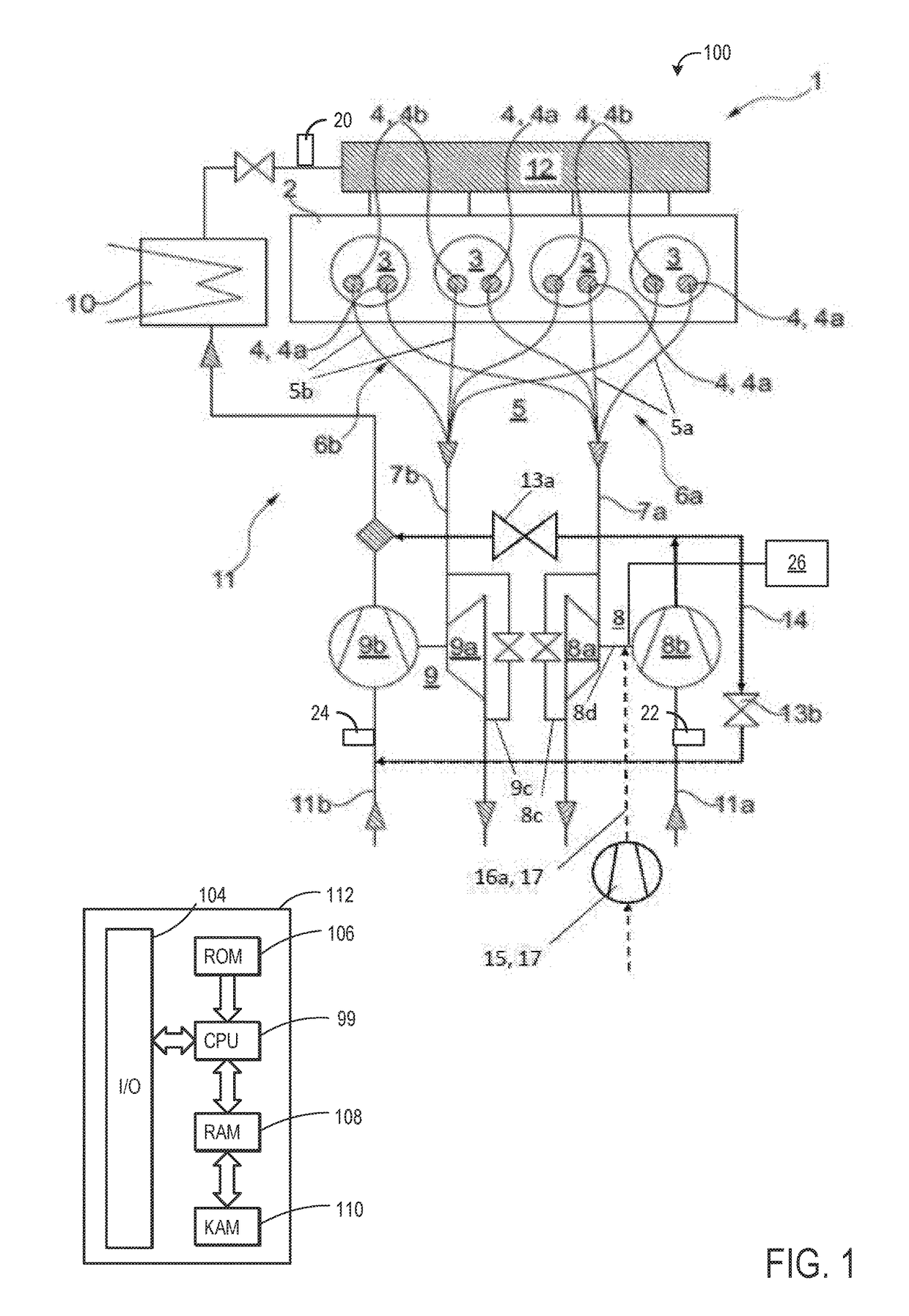Method for operating an internal combustion engine with parallel supercharging and with an activatable turbine, and internal combustion engine for carrying out a method of said type
a technology of internal combustion engine and activator, which is applied in the direction of combustion engine, machine/engine, electric control, etc., can solve the problems of reducing output power, affecting efficiency, and difficult configuration of exhaust-gas turbocharging, so as to improve torque characteristics, reduce engine speed range, and high charge pressure ratio
- Summary
- Abstract
- Description
- Claims
- Application Information
AI Technical Summary
Benefits of technology
Problems solved by technology
Method used
Image
Examples
first embodiment
[0089]FIG. 1 schematically shows an engine system 100 including the supercharged internal combustion engine 1 which is equipped with two exhaust-gas turbochargers 8, 9. Each exhaust-gas turbocharger 8, 9 comprises a turbine 8a, 9a and a compressor 8b, 9b which are arranged on the same shaft 8d, which shaft is mounted rotatably in an oil-lubricated bearing arrangement. The hot exhaust gas expands in the turbines 8a, 9a with a release of energy. The compressors 8b, 9b compress the charge air which is supplied to the cylinders 3 via intake system 11, charge-air cooler 10 and plenum 12, as a result of which supercharging of the internal combustion engine 1 is realized.
[0090]Said internal combustion engine is a four-cylinder in-line engine 1 in which the four cylinders 3 are arranged along the longitudinal axis of the cylinder head 2, that is to say in a line. Each cylinder 3 has two outlet openings 4 (a first outlet opening 4a and a second outlet opening 4b) which are adjoined by exhaus...
second embodiment
[0102]FIG. 2 schematically shows an engine system 200 including the supercharged internal combustion engine 1. It is sought to explain only the differences in relation to the embodiment illustrated in FIG. 1, for which reason reference is otherwise made to FIG. 1. The same reference signs have been used for the same components.
[0103]In the present case, too, auxiliary mechanism 17 for increasing the pressure on the compressor-side end of the bearing arrangement of the shaft 8d of the first exhaust-gas turbocharger 8 is provided. In addition to the pump 15 illustrated in FIG. 1, which subjects the bearing seal to the action of compressed air at the compressor side via the first feed line 16a, a second feed line 16b is provided which branches off from the intake system 11 downstream of the second compressor 9b and which provides charge air which serves as compressed air. Then, the pressure at the compressor-side end of the bearing arrangement of the shaft 8b is increased also using th...
PUM
 Login to View More
Login to View More Abstract
Description
Claims
Application Information
 Login to View More
Login to View More - R&D
- Intellectual Property
- Life Sciences
- Materials
- Tech Scout
- Unparalleled Data Quality
- Higher Quality Content
- 60% Fewer Hallucinations
Browse by: Latest US Patents, China's latest patents, Technical Efficacy Thesaurus, Application Domain, Technology Topic, Popular Technical Reports.
© 2025 PatSnap. All rights reserved.Legal|Privacy policy|Modern Slavery Act Transparency Statement|Sitemap|About US| Contact US: help@patsnap.com



